Gio Ponti and Paolo de Poli Important console circa 1942 Enameled copper tiles, walnut-veneered wood, walnut. 27 1/2 x 36 3/4 x 17 1/8 in (69.9 x 93.4 x 43.4 cm) One tile signed with artist’s signature ‘Paolo De Poli X7’. Underside with original exhibition inventory paper label ‘XXIII. Biennale Internazionale/di Venezia – 1942 – XX/1098’ and another inventory paper label with ‘55 / A’. Together with a certificate of authenticity from the Gio Ponti Archives.
Provenance Collection of Filippo de Pisis Casa de Pisis, Venice Exhibited ‘XXIII International Biennale’, Venice, 1942, inv. no. 1098 Literature Franco Grigioni, Arredamento, Milan, 1956, fig. 255 Guy Cogeval and Giampiero Bosoni, Il Modo Italiano: Italian Design and Avant-garde in the 20th Century, Montreal, 2006, p. 238, fig. 166 for a similar example Ugo La Pietra ed., Gio Ponti L’arte si innamora dell’industria, New York, 2009, p. 140, fig. 302 for a similar example Ugo La Pietra ed., Gio Ponti New York, 2009, p. 140 for a similar example Catalogue Essay The result of Ponti’s long-standing interest in collaborations between artisan and designer, this console table was designed by Ponti with the contribution of Paolo de Poli, master of enamel on copper, who refounded this craft specialty in Italy in 1933. Their collaboration began in 1940 with the panels designed by Ponti and made by de Poli for the halls of the rectorate of the University Padua, and continued with other panels, some of which are of considerable size, for the ocean liners whose interiors were designed by Ponti, including the Conte Grande and the Conte Biancamano. A number of other works of enamelized furniture were designed by Ponti and executed by de Poli in 1941, all of which were characterized by an extraordinary fantasy, playful themes, and childlike, yet at the same time enigmatic imagery. Often featuring trompel’oeil effects, these works, which may be regarded, in a loose sense, as “companion” pieces to the table, were decorated with outsized chess pieces, market stalls, and floral patterns. The table was one of a pair that stands out within Ponti’s oeuvre for its formal delicacy and the remarkable refinement of its realization. The table is doubly significant both as a work of Ponti and as one of the prized possessions of the painter Filippo de Pisis One notes a strong aesthetic affinity with the contemporaneous Labirinto table of 1941 made for Daria Guarnati, publisher of Domus: both works evoke classical sources which are sublimated and abstracted in different ways. Like the ‘Labirinto’ table, in this work the decoration of the enamel inlayruns down the perimeter and sides, closely following the form of thetable, and extends as far as approximately three-fourths of the length of the legs. Like the ‘Labirinto’, and unlike its pendant, which has a flatter, non-illusionistic pattern, the inlaid configuration is robustly developed in perspectival depth and articulated by a fictive shadow imbued with sophisticated chromatic effects. However, unlike the ‘Labirinto’, and like its pendant, the patterning is symmetrical, and restricted to the simple contrast of two colors, periwinkle blue and bright white, which contrasts the black of the shadow. In this case the pattern include elements reminiscent of baluster, chains, meanders and fork-like figures. All three pieces—this table, its pendant, and the ‘Labirinto’—have tapered legs, characteristic of Ponti’s feel for elegance. Yet in these paired works the taper is even more attenuated, reflecting a desire to attain the height of refinement and a certain dematerialization. While retaining its identity as an exemplar of Ponti’s synthesis of artistic fantasy and craft precision, the piece exhibits an unmistakable affinity with the designs of Piero Fornasetti which often have a classical matrix inflected by formalcaprice. In all three cases the designs are reminiscent of the classicizing decorative schemes, all of which are exquisitely linear and of an extreme delicacy, which adorn the ceramics Gio Ponti designed for Richard Ginori in the 1920s. A certain feel for Palladian ornament, which at times includes strictly bilateral symmetries, is also evident in both tables (though not in the ‘Labirinto’, which has an asymmetrical inlay), in keeping with the revalorization of Palladian and Mannerist motifs that Ponti pursued in the early 1920s when he worked with the Novecento architect Giovanni Muzio A similar
Gio Ponti and Paolo de Poli Important console circa 1942 Enameled copper tiles, walnut-veneered wood, walnut. 27 1/2 x 36 3/4 x 17 1/8 in (69.9 x 93.4 x 43.4 cm) One tile signed with artist’s signature ‘Paolo De Poli X7’. Underside with original exhibition inventory paper label ‘XXIII. Biennale Internazionale/di Venezia – 1942 – XX/1098’ and another inventory paper label with ‘55 / A’. Together with a certificate of authenticity from the Gio Ponti Archives.
Provenance Collection of Filippo de Pisis Casa de Pisis, Venice Exhibited ‘XXIII International Biennale’, Venice, 1942, inv. no. 1098 Literature Franco Grigioni, Arredamento, Milan, 1956, fig. 255 Guy Cogeval and Giampiero Bosoni, Il Modo Italiano: Italian Design and Avant-garde in the 20th Century, Montreal, 2006, p. 238, fig. 166 for a similar example Ugo La Pietra ed., Gio Ponti L’arte si innamora dell’industria, New York, 2009, p. 140, fig. 302 for a similar example Ugo La Pietra ed., Gio Ponti New York, 2009, p. 140 for a similar example Catalogue Essay The result of Ponti’s long-standing interest in collaborations between artisan and designer, this console table was designed by Ponti with the contribution of Paolo de Poli, master of enamel on copper, who refounded this craft specialty in Italy in 1933. Their collaboration began in 1940 with the panels designed by Ponti and made by de Poli for the halls of the rectorate of the University Padua, and continued with other panels, some of which are of considerable size, for the ocean liners whose interiors were designed by Ponti, including the Conte Grande and the Conte Biancamano. A number of other works of enamelized furniture were designed by Ponti and executed by de Poli in 1941, all of which were characterized by an extraordinary fantasy, playful themes, and childlike, yet at the same time enigmatic imagery. Often featuring trompel’oeil effects, these works, which may be regarded, in a loose sense, as “companion” pieces to the table, were decorated with outsized chess pieces, market stalls, and floral patterns. The table was one of a pair that stands out within Ponti’s oeuvre for its formal delicacy and the remarkable refinement of its realization. The table is doubly significant both as a work of Ponti and as one of the prized possessions of the painter Filippo de Pisis One notes a strong aesthetic affinity with the contemporaneous Labirinto table of 1941 made for Daria Guarnati, publisher of Domus: both works evoke classical sources which are sublimated and abstracted in different ways. Like the ‘Labirinto’ table, in this work the decoration of the enamel inlayruns down the perimeter and sides, closely following the form of thetable, and extends as far as approximately three-fourths of the length of the legs. Like the ‘Labirinto’, and unlike its pendant, which has a flatter, non-illusionistic pattern, the inlaid configuration is robustly developed in perspectival depth and articulated by a fictive shadow imbued with sophisticated chromatic effects. However, unlike the ‘Labirinto’, and like its pendant, the patterning is symmetrical, and restricted to the simple contrast of two colors, periwinkle blue and bright white, which contrasts the black of the shadow. In this case the pattern include elements reminiscent of baluster, chains, meanders and fork-like figures. All three pieces—this table, its pendant, and the ‘Labirinto’—have tapered legs, characteristic of Ponti’s feel for elegance. Yet in these paired works the taper is even more attenuated, reflecting a desire to attain the height of refinement and a certain dematerialization. While retaining its identity as an exemplar of Ponti’s synthesis of artistic fantasy and craft precision, the piece exhibits an unmistakable affinity with the designs of Piero Fornasetti which often have a classical matrix inflected by formalcaprice. In all three cases the designs are reminiscent of the classicizing decorative schemes, all of which are exquisitely linear and of an extreme delicacy, which adorn the ceramics Gio Ponti designed for Richard Ginori in the 1920s. A certain feel for Palladian ornament, which at times includes strictly bilateral symmetries, is also evident in both tables (though not in the ‘Labirinto’, which has an asymmetrical inlay), in keeping with the revalorization of Palladian and Mannerist motifs that Ponti pursued in the early 1920s when he worked with the Novecento architect Giovanni Muzio A similar
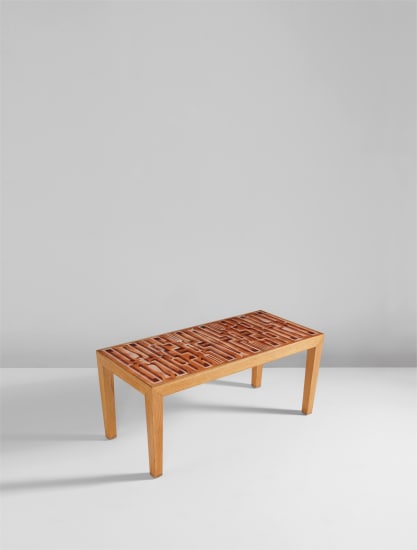
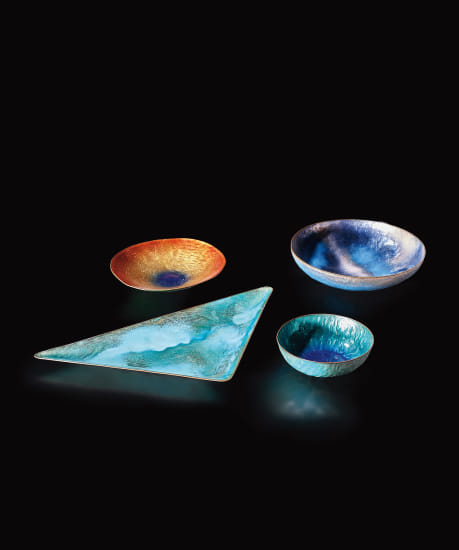
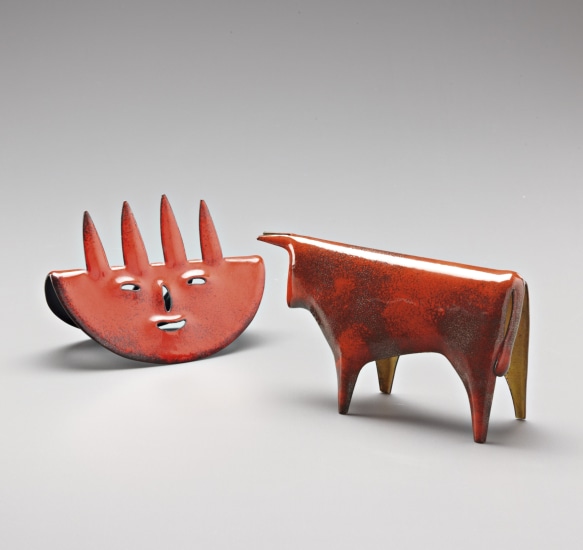
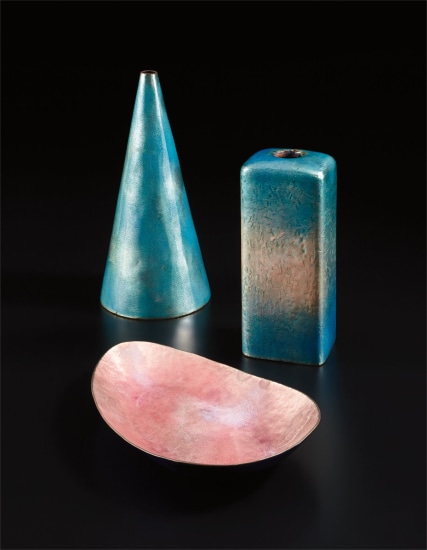


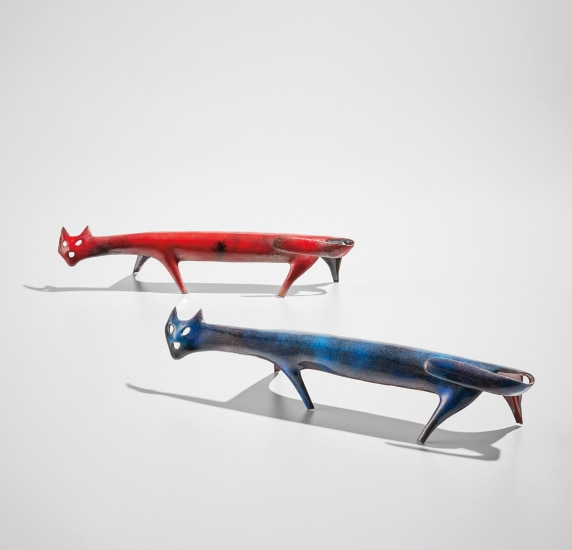
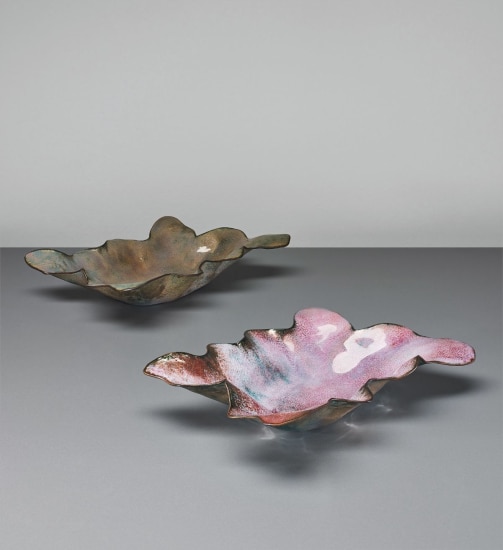

Testen Sie LotSearch und seine Premium-Features 7 Tage - ohne Kosten!
Lassen Sie sich automatisch über neue Objekte in kommenden Auktionen benachrichtigen.
Suchauftrag anlegen